What is Binocular Eye Relief? (Explained with Images)
Last Updated on
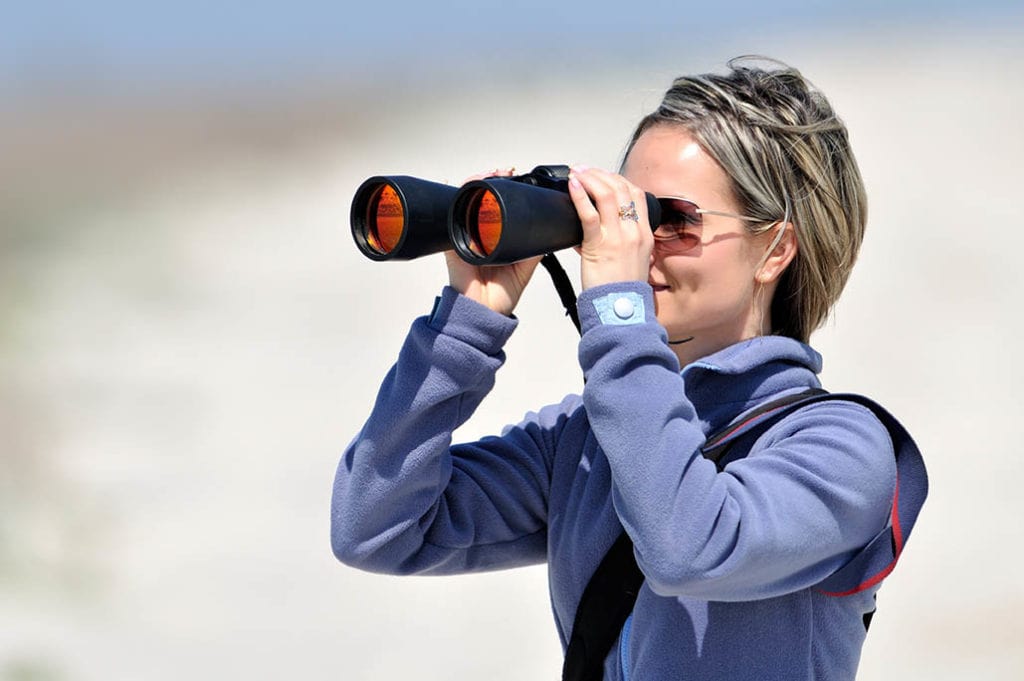
If you’re searching for the perfect pair of binoculars, you may have come across the term eye relief listed as a feature. Whether you need a pair of binoculars for hunting, birdwatching, or something else, it’s important to understand what all the features mean, so that you can make an informed decision.
In this article, we’ll explain what eye relief is, why it matters, how it works, and how it can affect your viewing experience. In short, binocular eye relief is the ideal distance between the lens and your eye. Many binoculars come with rubbery cups to help you keep your eyes at the correct distance, but these may need to be adjusted if you wear glasses. Keep reading to learn more!

What is Binocular Eye Relief?
In binoculars, eye relief is the distance between the eyepiece lens and the exit pupil, where light from the binocular’s apertures converges to make a focused and complete image. For optimal viewing, the exit pupil must align with the viewer’s pupil—this point is also known as the eye point.
If you look through binoculars from a distance that is further back than the eye point, the image you see will appear cropped on the edges—this is otherwise known as vignetting. On the other hand, if your eyes are too close, kidney-shaped shadows will surround your image.
For most people who don’t wear eyeglasses, a standard eye relief of between 10mm and 16mm is fine. However, for those who do wear eyeglasses, the distance between the eyepiece lens and the eyes will be larger, resulting in vignetting and a reduced field of view.
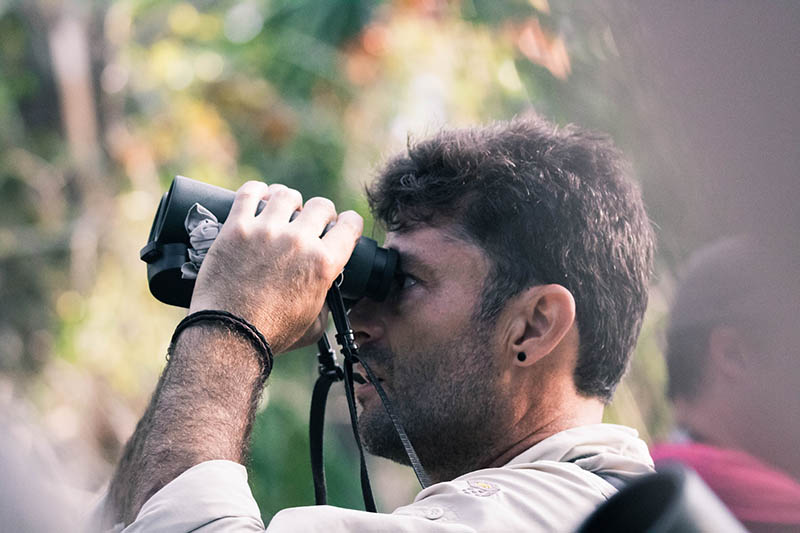
How Does it Work?
We’ve already explained how the quality of the image you see with your binoculars can be affected—by appearing cropped or shadowed—when looking through them outside of the ideal eye relief. Let’s take a closer look at why this happens.
Exit Pupil
The exit pupil is the virtual aperture (hole or opening through which light can travel) in an optical instrument. It’s important to understand that for an image to appear complete and bright, the point at which the exit pupil is formed (the eye point) must align as closely as possible with the viewer’s pupil.
If the exit pupil is formed before reaching the eye, or if it is formed beyond the point at which light enters the eyes, the image will be compromised.

Short Eye Relief
Binoculars with an eye relief of 13mm or less are considered to have short eye relief. For people who don’t wear eyeglasses, these should be fine. However, if you wear glasses and try to look through a binocular with short eye relief, you’ll find that the eyepoint does not reach your pupils, and you’ll lose the outer edges of your image to vignetting.
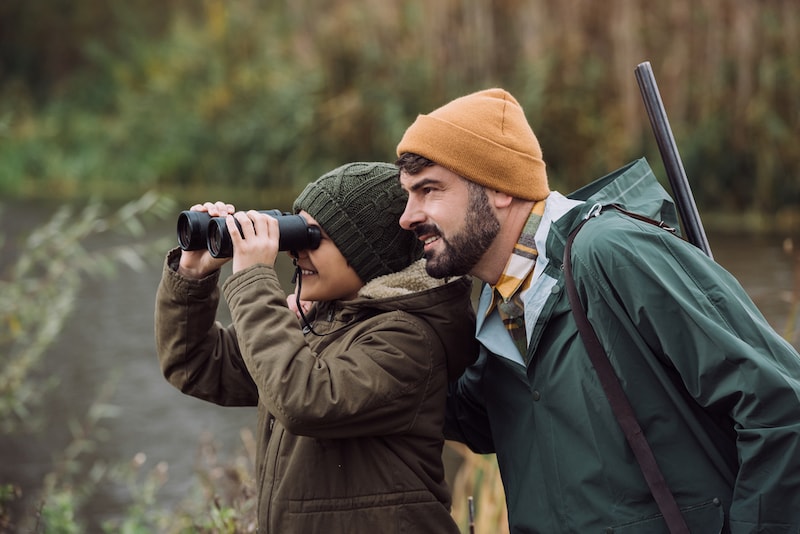
Long Eye Relief
In binoculars with a long eye relief of 20mm or more, the eye point is further from the eyepiece lens, allowing for the extra gap that eyeglasses cause. The result is a complete field of view without vignetting.
At a minimum, an eye relief of around 16mm might be okay for some people who wear glasses, but the ideal eye relief will differ from person to person, and depend on the thickness of the eyeglasses, as well as how far they sit from the eyes. It’s always safer to go for a longer eye relief of 18mm, or even 20mm.
Frequently Asked Questions (FAQs)
Are long eye relief binoculars better?
If you wear glasses, then binoculars with a longer eye relief will allow you to see the entire field of view without distortion. Looking through binoculars with short eye relief while wearing glasses will result in an image that’s cropped around the edges.
In short, for people who wear glasses, long eye relief is undoubtedly better.
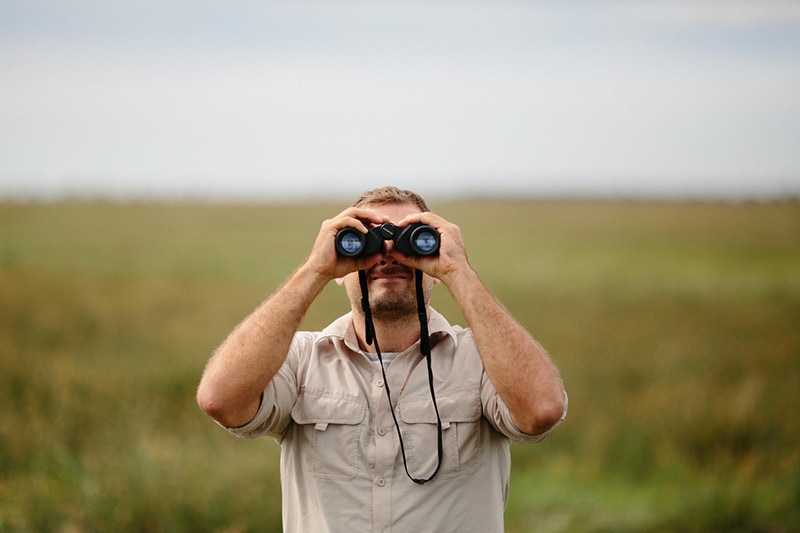
Should I take off my glasses to use binoculars?
People with mild myopia may be able to get away with using binoculars with short eye relief by taking off their glasses and adjusting the focusing. Unfortunately, this method can cause eye strain, and it will not work for those with astigmatism, whose view will be blurred and distorted without their glasses.
What is the best eye relief for glasses wearers?
Average eyeglass wearers may be able to get away with 15mm to 16mm eye relief, but, if possible, aim for more. Binoculars with 18mm eye relief will suit most people, but if you wear very thick glasses, or if your glasses sit far from your eyes, you may opt to go higher.
Do I need long eye relief if I don’t wear glasses?
If you don’t wear glasses, then you can use short and long eye relief binoculars. When you’re not wearing glasses, the eye cups on binoculars with long eye relief can be adjusted to meet your eyes at the correct distance from the eyepiece lenses.
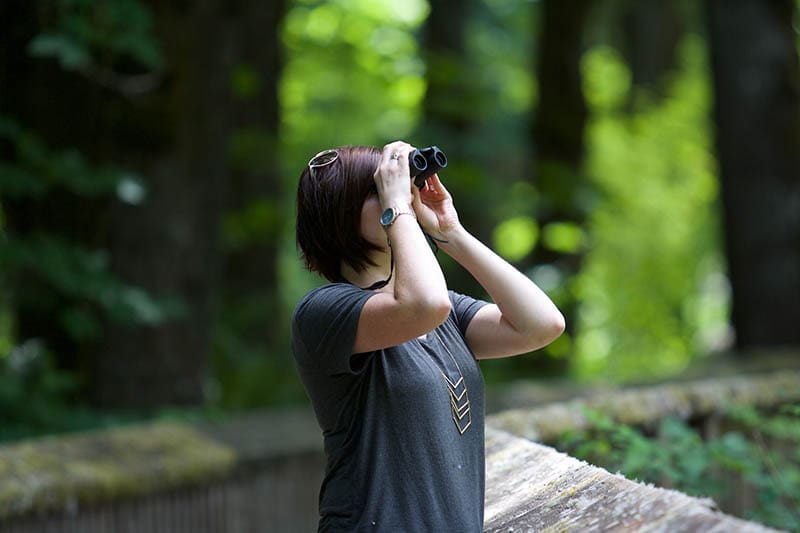
Does eye relief change with magnification?
As you increase magnification, the field of view will automatically decrease. Increased magnification will also lessen then eye relief. In other words, if you want long eye relief, opt for lower magnification. On the other hand, if you want increased magnification, opt for shorter eye relief.
What is vignetting?
A vignette is when a dark border, often blurred, appears around an image. When using binoculars, you want to be able to view the entire picture, without part of the field of view being cropped out by a vignette. A vignette usually appears in binoculars when the viewer’s pupil is farther away than the instrument’s eyepoint.
Final Thoughts
Eye relief is the ideal distance between the eyepiece lens and your eye. Looking through your binoculars at this distance will give you the best image possible. However, the ideal eye relief distance will differ depending on whether you wear glasses, the thickness of the glasses, and where they sit on your face.
Using binoculars with the ideal eye relief means the difference between an incomplete image that’s cropped and blurred at the edges, and one that’s complete, and clear. If you wear glasses, it’s important to make sure your binoculars have long eye relief. If you don’t wear glasses, you should be able to use both short and long eye relief binoculars without any problems.
Featured Image Credit: aabeele, Shutterstock
About the Author Cheryl Regan
Cheryl is a freelance content and copywriter from the United Kingdom. Her interests include hiking and amateur astronomy but focuses her writing on gardening and photography. If she isn't writing she can be found curled up with a coffee and her pet cat.
Related Articles:
What Is the Best Binocular Magnification for Hunting? Optical Features Explained
How to Collimate Binoculars: 9 Expert Tips
Binocular Magnification Chart: Numbers & Distances Compared
When Were Binoculars Invented? History, Today & Future
Can You Use Binoculars to Look At Stars? How to Choose the Right Pair
How to Choose Binoculars for Bird Watching: 10 Expert Tips
What Does 20X50 Mean on Binoculars? Our Helpful Guide
10 Best Binoculars in Canada of 2024: Reviews & Top Picks
